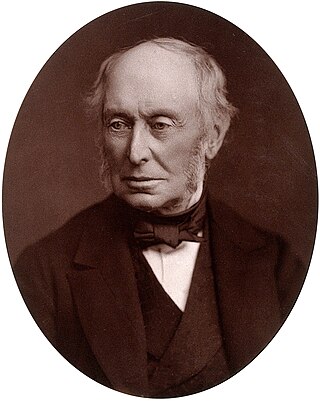
William Armstrong, 1st Baron Armstrong, was an English engineer and industrialist who founded the Armstrong Whitworth manufacturing concern on Tyneside. He was also an eminent scientist, inventor and philanthropist. In collaboration with the architect Richard Norman Shaw, he built Cragside in Northumberland, the first house in the world to be lit by hydroelectricity. He is regarded as the inventor of modern artillery.
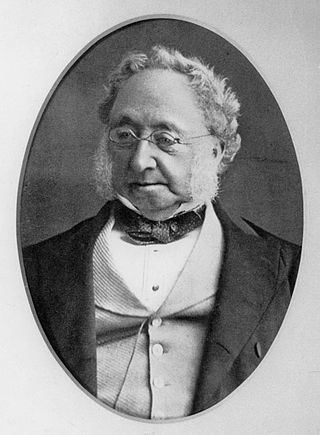
Thomas Hawksley was an English civil engineer of the 19th century, particularly associated with early water supply and coal gas engineering projects. Hawksley was, with John Frederick Bateman, the leading British water engineer of the nineteenth century and was personally responsible for upwards of 150 water-supply schemes, in the British Isles and overseas.

The Limehouse Cut is a largely straight, broad canal in the East End of London which links the lower reaches of the Lee Navigation to the River Thames. Opening on 17 September 1770, and widened for two-way traffic by 1777, it is the oldest canal in the London area. Although short, it has a diverse social and industrial history. Formerly discharging directly into the Thames, since 1968 it has done so indirectly by a connection through Limehouse Basin.
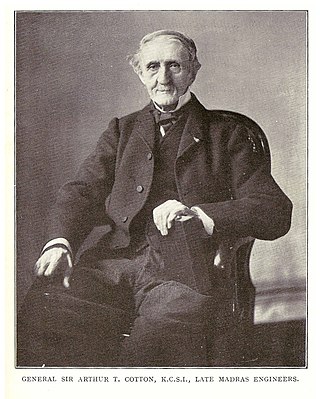
General Sir Arthur Thomas Cotton was a British army officer and irrigation engineer who worked in the Madras Presidency.

Sir Alexander Gibb was a Scottish civil engineer. After serving as Civil Engineer-in-Chief to the Admiralty and Director-General of Civil Engineering at the Ministry of Transport, he established the engineering consultancy firm Sir Alexander Gibb & Partners.

A hydraulic power network is a system of interconnected pipes carrying pressurized liquid used to transmit mechanical power from a power source, like a pump, to hydraulic equipment like lifts or motors. The system is analogous to an electrical grid transmitting power from a generating station to end-users. Only a few hydraulic power transmission networks are still in use; modern hydraulic equipment has a pump built into the machine. In the late 19th century, a hydraulic network might have been used in a factory, with a central steam engine or water turbine driving a pump and a system of high-pressure pipes transmitting power to various machines.

Ernest Henry Lamb, 1st Baron Rochester, CMG was a British Liberal and National Labour politician who served as Paymaster General from 1931 to 1935 in the National Government of Ramsay MacDonald.

Ernest Macartney de Burgh was an Irish-born Australian civil engineer, chief-engineer for water supply and sewerage in New South Wales.
Joseph Quick was an English civil engineer who was closely involved in improvements to supply piped water in the great industrial cities of the nineteenth century. Both his father and his son were also waterworks engineers by the name Joseph Quick.

Henry Francis Cronin CBE, MC, BSc (Eng) was a British civil engineer and army officer. He served in the Royal Inniskilling Fusiliers and the Royal Engineers during the First World War and was awarded the Military Cross for constructing defensive works and taking part in assaults under heavy fire. Cronin was appointed chief engineer of London's Metropolitan Water Board in 1939 and held that position until 1959. During the London Blitz he worked hard to maintain water supplies for fire fighting.
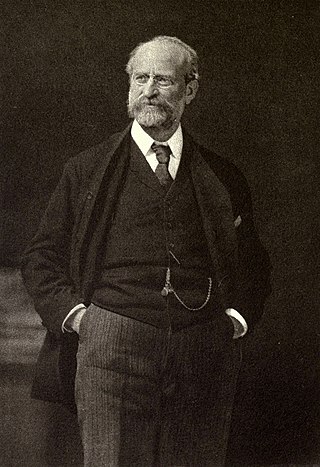
Clemens Herschel was an American hydraulic engineer. His career extended from about 1860 to 1930, and he is best known for inventing the Venturi meter, which was the first large-scale, accurate device for measuring water flow. He developed this device while serving as director of the Holyoke Testing Flume, a turbine testing facility which he would redesign, which became the first modern hydraulics laboratory in the United States and the world.
William Davidson (1844–1920), was an Australian civil engineer who headed the Melbourne Water Supply department, and was responsible for important improvements to Melbourne's water supply system during sustained periods of drought.
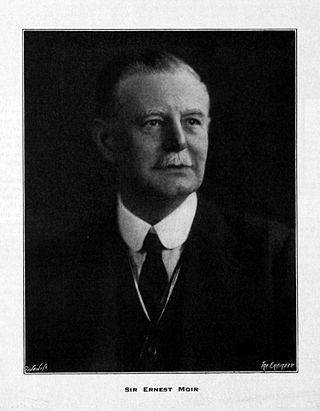
Sir Ernest William Moir was a British civil engineer and the first Moir baronet. He is credited with inventing the first medical airlock while working on the Hudson River Tunnel in New York in 1889.

Jonas Waldo Smith was an American civil engineer and chief engineer on the Board of Water Supply of New York from 1905 to 1922. He was awarded the 1918 John Fritz Medal.
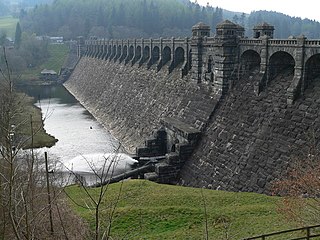
Liverpool Corporation Waterworks and its successors have provided a public water supply and sewerage and sewage treatment services to the city of Liverpool, England. In 1625 water was obtained from a single well and delivered by cart, but as the town grew, companies supplied water to homes through pipes. There were two main companies by the 1840s, but the water supply was intermittent, and there was general dissatisfaction with the service. Liverpool Corporation decided that such an important service should be provided by a public body, and sought to take over the water supply companies.
John Blackwell was an English civil engineer, known for his work as superintending engineer of the Kennet and Avon Canal under John Rennie and later as the canal company's resident engineer.

Arthur Billing (1824–1896), was a British architect.
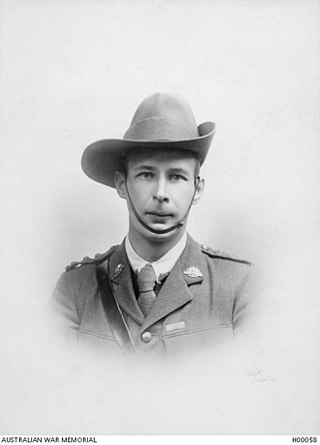
Arthur James Hillman was born in Perth, Western Australia in 1884. Arthur Hillman was a civil engineer who worked for the Public Works Department of Western Australia. He served with the Australian Army during World War I and spent most of his service tunnelling under the front line trenches in France. When he returned to Perth after the war, he resumed working for the Public Works Department. Hillman worked on water supply projects including being executive engineer on the Lower Bickley Brook Reservoir. Hillman died in 1922 as a result of an ongoing medical issue, which was caused by being gassed during WWI.
Surrey Street Pumping Station is a Grade II listed pumphouse in Croydon, South London, England, that was built in four phases. It is the site of a well that "had been more or less public ever since the town existed". It was opened by the Archbishop of Canterbury on 11 December 1851, making Croydon one of the first towns to have a combined water and sewage system under the Public Health Act 1848, and to Chadwick’s arterial-venous design. The water was pumped from the wells, up Park Hill to a cylindrical brick reservoir with a domed roof to provide a constant supply of fresh piped water. Prior to its opening, the inhabitants of Croydon used the river Wandle, streams and shallow wells, which were often contaminated by seepage from privies and cesspools. Parts of Norwood were served with water from the Lambeth Water Company, a private company established by an act of Parliament in 1785.
Rupert Cavendish Skyring Walters was a New Zealand-born British civil engineer, geologist and author, specialising in water supply. He is known for his work on the dams at British reservoirs including Sutton Bingham, Lamaload, Weir Wood, Drift and Stithians. He spent much of his career at Herbert Lapworth Partners (1932–67) in London. His books were The Ancient Wells, Springs, and Holy Wells of Gloucestershire (1928), The Nation's Water Supply (1936) and Dam Geology (1962), and he also published on English hydrogeology and the history of engineering in antiquity. He was the president of the Institution of Water Engineers (1951–52), and an elected fellow of the Geological Society of London and Institution of Civil Engineers.















